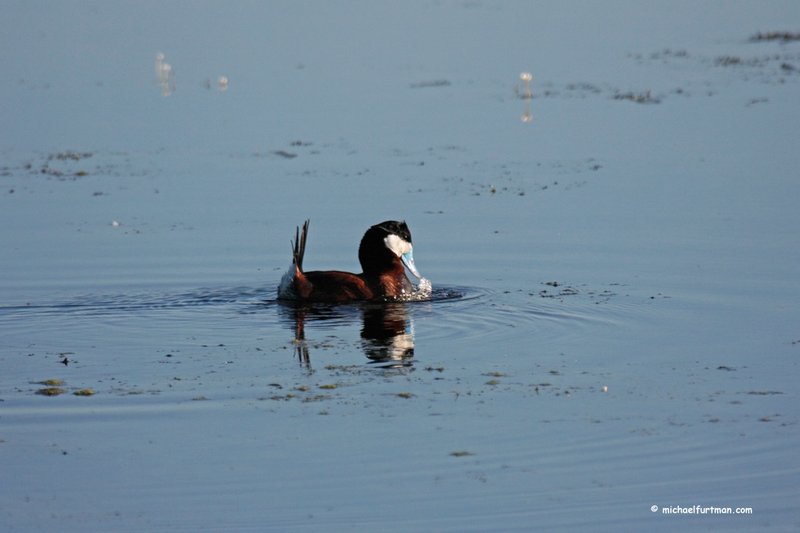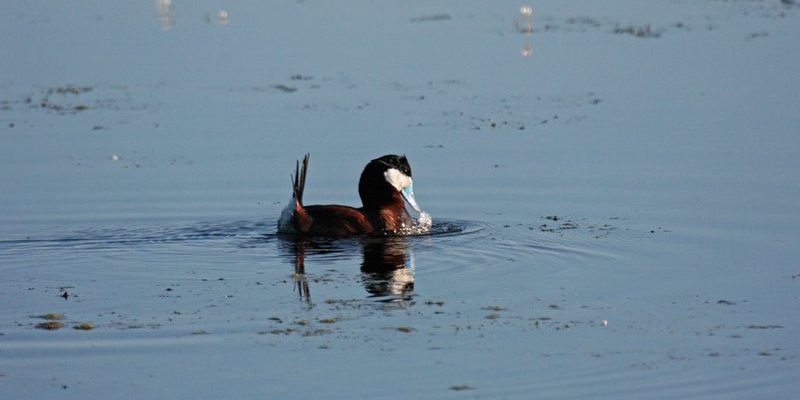
When you think of ducks, the image of those cute waddling creatures might come to mind, but there’s much more beneath the surface. Each species of duck has its distinct courtship behaviors, often tied closely to their habitat, social structure, and even their physical appearance. It’s like they’re putting on a show to impress their potential partners. So, let’s dive into the enchanting world of duck romance and see how these charming creatures make connections.
Duck courtship is as varied as the species themselves. Generally, it involves a mix of displays and vocalizations that serve to attract potential mates. Many male ducks are especially colorful during the breeding season. This color change isn’t just for show; it’s part of a well-orchestrated strategy to catch the eye of the females. Think of it as putting on your best outfit for a big date—dressing to impress!
In the wild, these courtship rituals can be quite elaborate. For instance, some male ducks will puff up their chests, shake their heads, and even produce unique sounds to intrigue females. Others might participate in synchronized swimming displays where they glide together in a choreographed routine. It’s a captivating sight that not only showcases their physical capabilities but also indicates their health and vitality—all critical traits for successful mating.
Male ducks often engage in behaviors like head bobbing and tail wagging to signal their interest. These actions can range from subtle to exuberant, with some ducks even performing water splashes to show off their agility. Watching a male mallard puff out his chest while gracefully swimming in circles can feel almost like a romantic ballet!
Visual Displays and Their Importance
When it comes to finding a mate, visual displays are key in the duck world. Males often use their vibrant plumage not just to look good, but also to signal their physical fitness. You might be wondering why this matters so much. Well, a brightly colored male is generally healthier and better able to survive in the wild, making him a more attractive mate.
Imagine this: a female duck is swimming around, comparing potential partners. The males flaunt their colorful feathers, performing elaborate maneuvers to catch her attention. But it’s not just about looks. The ability to maintain those feathers while swimming and diving is a testament to their strength and agility. It’s a smart way of showing off their potential as a mate—after all, raising ducklings is no small feat!
Vocalizations: The Language of Ducks
Just like humans have their ways of communicating, ducks rely heavily on sounds to express their intentions and emotions. Male ducks often have specific calls that they use during courtship. These quacks and whistles serve different purposes, from warding off rivals to signaling a mate’s interest.
The most famous of these is likely the classic quack, but many species have unique sounds. For example, some male wood ducks emit a series of soft whistles, while others might grunt or produce a raspy call. This vocal diversity not only helps females choose a partner but also establishes a sense of territory among males.
Interestingly, these sounds can also reflect the health of the duck. A vigorous, clear call indicates a strong male, while a weak or hoarse sound can suggest illness or distress. Essentially, it’s a “what you hear is what you get” situation, which makes their vocalizations incredibly significant during the mating season.
The Role of Nesting in Duck Courtship
Nesting plays an essential role in duck courtship. After successfully attracting a mate, the female often leads the way in choosing a nesting site. Ducks typically seek out places that offer good cover from predators and safe access to food and water.
Once a pair has established a bond, you’ll often find them working together to prepare the nest. While the female does most of the building, males may help by defending the area and ensuring it remains safe. It’s a partnership where both ducks contribute in ways that enhance their chances of raising offspring.
Interestingly, some species of ducks practice *nest parasitism,* where a female lays her eggs in another female’s nest. While this tactic might seem risky, it can be advantageous in ensuring more ducklings survive, as it allows the adopting female to focus on fewer chicks. This behavior adds a layer of complexity to the courtship process—showing that reproduction in ducks can be both cooperative and strategic.
Seasonal Influence on Mating Behavior
You might wonder how the seasons affect duck courtship and mating. Generally, ducks are seasonal breeders—most engaging in courtship rituals in the spring when the weather warms and food becomes plentiful. The change in temperature and availability of resources triggers this romantic flurry.
As the warmer months approach, male ducks become more aggressive in their displays and calls. This period is crucial for establishing dominance among males and attracting females. The competition can be fierce, and you’ll often see males engaging in physical confrontations to assert their status. It’s almost like a reality show for ducks, where the strongest and most dazzling contestants vie for attention!
Additionally, as mating season progresses, the dynamics can change. Once females choose their mates, the focus shifts to building nests and raising ducklings. This is where teamwork shines, as the couple works together to keep their future brood safe and fed.
The Importance of Mate Selection
At the heart of duck courtship lies the intricate process of mate selection. Ducks have a good sense of what they’re looking for in a partner, and the choices they make can significantly impact their reproductive success. Honest displays of health and vigor during courtship are crucial in convincing potential mates.
Interestingly, some species of ducks are known for being monogamous for a single breeding season, while others may mate for life. This mating strategy can depend on the species and environmental conditions. For example, mallards often form short-term pair bonds, while some diving ducks may stay with the same partner across multiple seasons.
You might be wondering how a female decides on a mate. She’ll consider factors like the male’s plumage, calls, and even his behavior in the water. Strong, dominant males with impressive displays have a better chance of winning her over. This selection process ensures that only the most suitable genes are passed down to the next generation, improving the survival chances of their ducklings.
The courtship and mating rituals of ducks are a beautiful and complex dance of attraction and survival. From colorful plumage to unique vocalizations, these charming creatures offer a glimpse into the natural world’s intricacies. Watching these rituals unfold can give you a renewed appreciation for nature and the simple yet profound ways life continues.
Ducks aren’t just waddling around for the sake of it; they’re engaging in a captivating social game filled with strategy, beauty, and instinct. Next time you’re near a pond, take a moment to observe their lively interactions. Who knows? You might just witness a heartwarming display of duck love in action!

